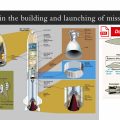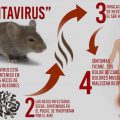
Human waste will actually be more useful to get people to Mars than it was actually believed to be. Researchers from Penn State University have developed special microbe reactors that will break down the solid and liquid waste. The waste will then be recycled and will be used as food. “It will be an obvious choice to get Vegemite on toast instead of human waste.

The researchers explained that their solution will save a lot of resources for the ISS and space teams. The team discussed other methods and said that while all other methods like hydroponics are also feasible in space but the issue with them is that they drain resources like energy and water. They made use of artificial solid and liquid waste which is often used in waste management tests. They created a cylindrical system that was about four feet long and four inches in diameter.

After that, an artificial waste was exposed to various microbes. The microbes inserted to break down the waste use anaerobic digestion which breaks down biodegradable materials without oxygen. “The biggest byproduct obtained as a result of the anaerobic digestion was methane. ” Instead of looking into methods to get rid of the methane gas, the researchers found out that they can recycle methane and can grow another functional type of microbes.
The microbe, Methyloccus capsulatus, is used in animals feed already. This same thing can be used to produce food during a spacecraft flight. The team said that they found their inspiration from the aquariums and the procedure that is performed to filter the fish waste. “House and other members of his team said that the microbes they grew for consumption contained almost 52 percent protein and 36 percent of fat. “
This can give the astronauts a solid nutritional diet. ” “Each component is quite robust and fast and breaks down waste quickly. That’s why this might have the potential for future space flight. “NASA and ISS have been looking for ideas on how to recycle or remove the space waste. “
It will burn in the atmosphere eventually. House also said that the researchers’ team from Penn State can provide a much better solution to the problem. ” “Imagine if someone were to fine-tune our system so that you could get 85 percent of the carbon and nitrogen back from waste into protein without having to use hydroponics or artificial light. That would be a fantastic development for deep-space travel.





